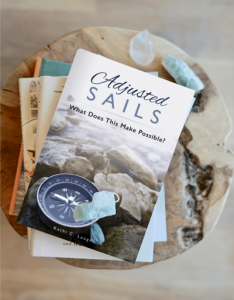 There are some words that over time get lost in the clutter of all of the messages we receive. One of those words is strategy. Be strategic! Be intentional! Be purposeful! Each of those admonitions is great advice. But what do they mean? We need to explore beyond the sound bites and be certain that we understand what it means to apply the knowledge.
There are some words that over time get lost in the clutter of all of the messages we receive. One of those words is strategy. Be strategic! Be intentional! Be purposeful! Each of those admonitions is great advice. But what do they mean? We need to explore beyond the sound bites and be certain that we understand what it means to apply the knowledge.
Working as a master strategist over the past decade, the concept of strategy has proven time and time again to be much simpler than you might think. It comes down to this: Begin with the end in mind. When we employ strategy, it goes beyond the plan. It goes all the way to the end, to the outcome. Begin with the end in mind.
Think of it like reverse engineering. First you determine what you’re building. Then you work backwards to develop the right sequence of steps to get you there. When you do that, you are being strategic. You know what you are going to need and when you are going to need it. You know what you need to do and when you need to do it. Beyond that, you know why.
If the question is this: What should I do today? The answer is this: What do you want to be/have tomorrow? Within the answer to the second question is your answer for the first. That is why our coaching programs focus on living today like you want tomorrow to be. And that is where the true magic of strategy serves us.
Being strategic goes beyond being your guide in how you plan. It goes to how you live. Let’s look at three ways we experience stress in our lives and see how being strategic can reduce and even eliminate that stress for us.
#1 – The Art of the No
We all struggle with this, particularly women. We find it stressful to say no because we aren’t comfortable with when and how to say no. Let me share with you what Michael E. Porter (Harvard Business Review) who is considered by many a modern day Father of Strategy has to say on this subject. When asked to define strategy, his response was this: “The essence of strategy is choosing what not to do.” I found that very insightful. Being strategic is in fact a giant filter. It gets rid of the clutter in the way of getting to the end.
When we begin with the end in mind, we know what will take us there and what will not and we can focus there. We can also use that context when choosing what not to do. For many years I have employed this simple principle: “Don’t say no, say how.” It sounds simple but it’s really a way of vetting your options. Can I do this? Yes- if you do A,B or C or perhaps if you do not do A, B or C. It creates a choice instead of a “NO”. One of the most effective sales techniques ever employed is giving customers options for purchase. Would you like A, B or C? They are instinctively drawn to choosing one of the offers provided vs. just Do you want A? Yes or No.
Apply that in your life. Someone asks you to serve on a committee that is going to mean a commitment of your time. Is that going to serve your “end in mind” strategy? If yes, you have your answer. If not, then the choice is to either take on the new responsibility and sacrifice momentum or stay focused on the strategy you have in place. When responding, it is now within a context for you and for the person that offered you the opportunity. Now you have the opportunity to make them aware of what you are working toward as well. It may very well be that there is a masked opportunity in play that you would not have seen without that specific conversation.
#2 – The Actions of the Day
The second place we experience stress is when we fail to live up to our promises to ourselves. Any time we move out of integrity (say one thing – do another) it introduces stress. Who we are vs. what we do is the ultimate generator or dissipater of stress. It’s about the tough things we have to do every day to move us to that “end in mind” state. If we don’t start with that vision, we will soon find ourselves losing steam when the work that needs to be done isn’t recognized as important, even vital.
We all feel better about ourselves when we have the satisfaction of knowing we’ve done what we said we would do. It’s about self-discipline, one of the hardest disciplines to achieve. Personal leadership expert Brian Tracy defines discipline with these six words: Do what you resolve to do. I love that. So very close to my definition of strategy: Begin with the end in mind. They are in fact the same fundamental principal. One serves the other.
The planning of our days becomes straight forward. The actions of our days become deliberate. As a result, we reduce the stress of continuous choice. The decisions are already made. We are now just living them out. The former editor of Fortune magazine Alvin Toffler offers this advice: “You’ve got to think about big things while you’re doing small things, so that all the small things go in the right direction.”
#3 – The Disruptions of the Day
Here is perhaps the most important place to consider when reviewing the true value of strategy. Each of us faces disruption in our lives. Sometimes they are significant events such as death, divorce, even disease. Even if not happening directly to us, when they happen to someone close to us it will still impact us. But it goes beyond those larger disruptions to include some that might not seem as significant but still disrupt our path. Your car doesn’t start, the plumbing picks the absolute worst time to stop working, your computer has turned into an alien machine – so many opportunities for stress to burst onto the scene and distract us from our path.
When we operate from the perspective of what we are living toward instead of what we are living through it makes all the difference. Within that framework we are always able to find contingencies and resources will be at the ready. We can see disruptions in a different light. Where is the lesson? Where is the door? In so many cases, what starts out as a disruption is in fact a new opening on the path.
The next time you find yourself struggling with saying no, lacking purpose in your day-to-day activities or derailed by disruptions, remember that you have a different choice. You can choose to live today like you want tomorrow to be. You can choose to begin right now with the end in mind. You can. I have faith in you. You will.
Live well.












